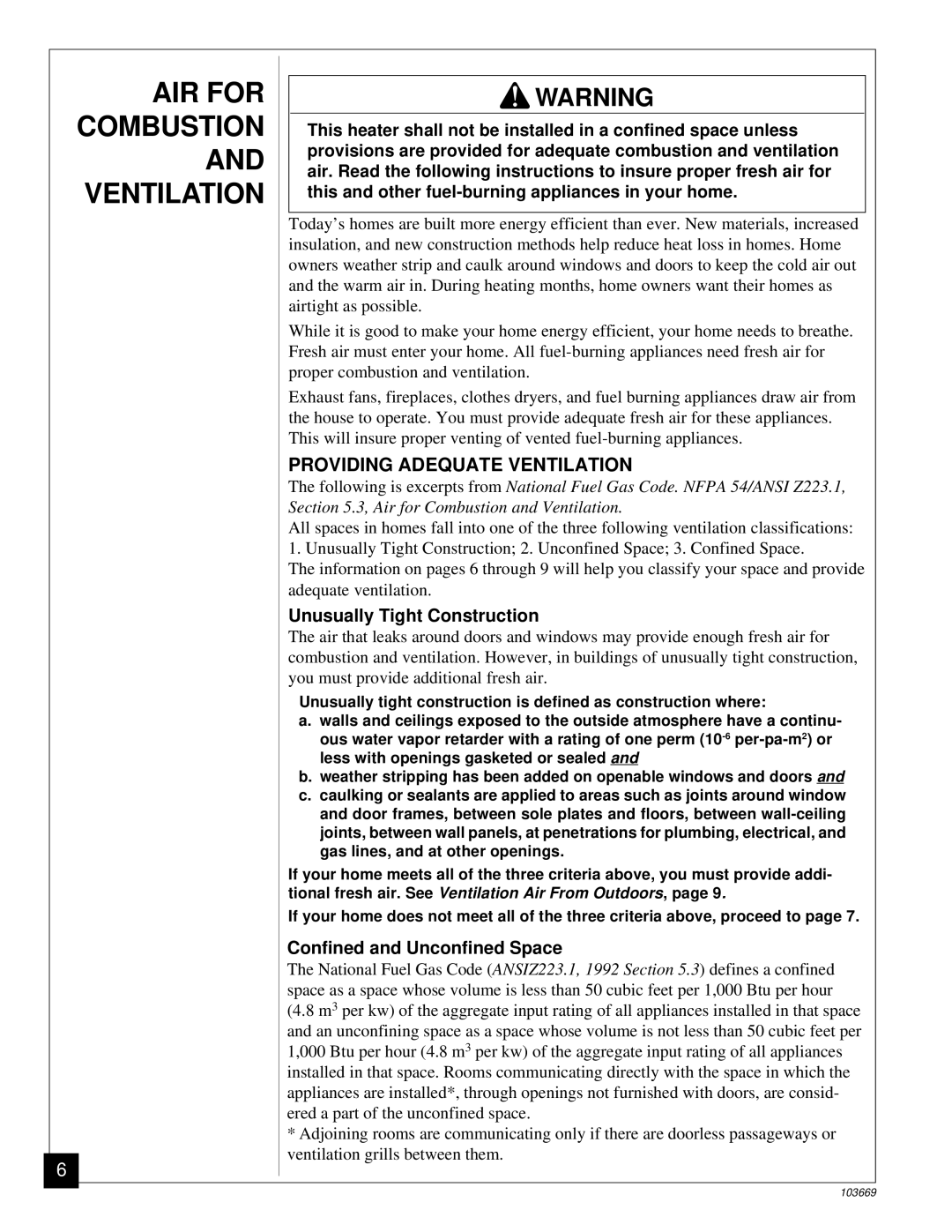VMH10TP specifications
Desa VMH10TP is an innovative and versatile heating solution that stands out in the HVAC market. Designed with efficiency and user-friendliness in mind, this model caters to various heating needs in both residential and commercial settings. Its cutting-edge technology ensures that spaces are warmed quickly while minimizing energy consumption.One of the main features of the Desa VMH10TP is its powerful heating capacity. The unit is equipped with a robust heating element that provides a remarkable output, making it suitable for larger rooms or open areas. Users can enjoy a comfortable ambient temperature, even during the harshest winter months. This model also includes adjustable heat settings, allowing users to easily customize their heating preferences according to specific needs or time of the day.
Incorporating advanced digital control systems, the Desa VMH10TP offers convenient programming options. Users can set timers, adjust temperature settings, and manage the unit remotely through integrated smart technologies. This feature not only enhances comfort but also promotes energy efficiency, as users can heat spaces just before arriving home or turn off the heater when not needed. The intuitive display makes it easy to navigate through various settings, catering to both tech-savvy individuals and those who prefer traditional operation.
Safety is another key characteristic of the Desa VMH10TP. The unit is designed with multiple safety features, including overheat protection, tip-over switch, and a cool-touch exterior. These safety measures ensure that both users and their spaces remain secure while the heater is in operation. The sleek design and compact size also make it easy to position the heater in various locations without sacrificing space.
Furthermore, the Desa VMH10TP is built with durability in mind. High-quality materials and construction standards ensure that the unit can withstand regular use over the years. With proper maintenance, users can expect a long lifespan, making this investment worthwhile.
In summary, the Desa VMH10TP is a stylish and effective heating solution that combines powerful performance with modern technology. Its customizable settings, safety features, and robust design make it an ideal choice for those seeking a reliable way to maintain comfort during cold seasons.

